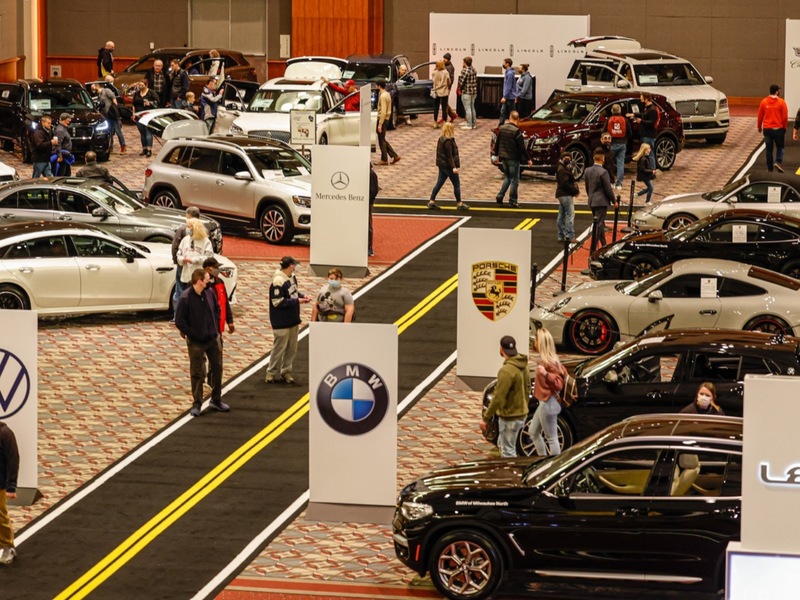This content is presented in partnership with ADAMM.
Ford executives thought they were onto something big with the Mustang, so they ordered 100,000 inaugural units. They ended up selling 22,000 – on the first day – and 681,000 convertibles, fastbacks and coupes before the second model year began.
It was the beginning of a storied history, as well as a new class of vehicle known as the “pony car.” Automobile Magazine writer Aaron Gold says the Mustang “was identified as a future classic from the day it launched.” Editors at Edmunds.com say “the Mustang is a pillar of American automotive lore,” bringing “sporting dash and styling at a price almost anyone could afford.”
It was first cobbled together with parts from six-cylinder “economy car” Falcons and family-oriented four-door Fairlanes and Galaxies, but Edmunds says it “has always been extraordinarily attractive.”
Owners of 21st-century models often give their Mustangs vintage-car treatment, driving them only when the weather is nice.
“A man just traded in his 2000 for a 2020, and it was immaculate,” says John Hassell, sales and leasing professional at Gordie Boucher Ford in Menomonee Falls. “He put 2,000 miles a year on it, and I turned around and sold it right away.”
Hassell says he’s met many owners who don’t just until all the snow melts, but until after a couple of rains, “to make sure all the salt is washed off the streets.”
On the other hand, Dave Vajgrt, sales consultant for Heiser Ford of Glendale, says Mustangs sell year round. “People come in on Christmas Eve to buy a Mustang,” he says. “I’ve definitely seen a few Mustang Christmas presents.”
According to the CJPonyPart blog, the Mustang’s journey to the 10-million sales mark goes all the way back to Ford’s belly flop with the Edsel in the late 1950s. The legendary Lee Iacocca, who had worked his way up through the ranks in engineering and sales before becoming head of product development, thought what the company needed was “a sporty, yet affordable car.”
The blog says Iacocca searched the world for inspiration, then “stumbled upon a sketch” by a Ford designer that fit the bill for “a ‘youth car’ that would appeal to the baby boomer generation.”
Trying to decide between naming the new car Mustang or Torino, Ford produced two concept cars, one a mid-engine two seater and the other a front-engine, rear-wheel-drive four seater. The four-seater, based on the Falcon, won out, but the design that has endured through the decades was achieved by pushing the cockpit back on the chassis to create a longer hood and shorter rear deck, plus touches like a running horse ornament incorporated into the grille and side scallops on the flanks.
The car that was introduced at the New York World’s Fair as what is often called a 1964½ model had a modest 170 cubic-inch, six-cylinder, 101 hp engine, though bigger engines that produced up to 289 hp were available.
Gold points out that “a plethora of options enabled buyers to configure their Mustang as anything from an economical runabout to a weekend race car” – a tradition that Hassell says continues to this day: “You can buy a 2020 Mustang for anywhere from $28,000 to $120,000.”
Ford has reinvented the Mustang from time to time. For example, there were muscle car versions in the late ’60s and early ’70s, but when gas prices soared, Ford based the new Mustang II design on “a stretched Pinto platform” and marketed it as “an upscale economy car.” Sales skyrocketed, and Motor Trend magazine named the Mustang II its 1974 Car of the Year.
Redesigns followed in ’79 and ’87, but Ford acted on enthusiast demands to bring back classic cues in ’94. Mustang went all-out “retro” in 2005 with a more squared-off shape that “paid proper homage to the first-generation Mustang,” Gold says. Around that time, other car companies also introduced models that harkened back to the muscle car days – a strategy that has enticed retirees seeking to revisit their youth and youthful buyers looking for excitement.
Hassell says evidence of the Mustang’s ongoing popularity can be seen in the Shelby GT500. Shelby has long been souping-up limited-edition Mustangs, but the 2020 model is the first since 2014. Car and Driver says it “blends modern sports-car performance and iconic muscle-car presence.” With a supercharged V8 that “hammers out 760 hp,” the magazine says, “it sits at the pinnacle of American muscle cars,”
“Every store gets one,” Hassell says. “Ours didn’t even hang around long enough for us to display it online.”
“There is a demo of people who are drawn to that iconic look, but with all the technological updates,” Vajgrt says. The introduction of a turbocharged EcoBoost six-cylinder engine a few years ago, he says, made customers say, “Wow, you can drive this powerful car and not have to stop at every gas station along the open road.”
The Next Big Thing, due later this year, is the electric-drive Mustang Mach-E. The name recalls the performance “Mach 1” version equipped with 351, 390 and 428 cubic-inch gasoline engines that made their debut in 1969.
Ford bills it as a crossover instead of a sports car. The Mach E’s battery has a range of 300 miles and can be recharged in a little more than an hour, while the motor produces 459 hp and can go from zero to 60 mph in less than four seconds. Prices start at $45,000 and top out around $61,000.
“It’s a case of an America icon being used as the platform for the future,” Vajgrt says.
Ford has been taking reservations online for Mach-E’s expected to come off the line starting late this year.





